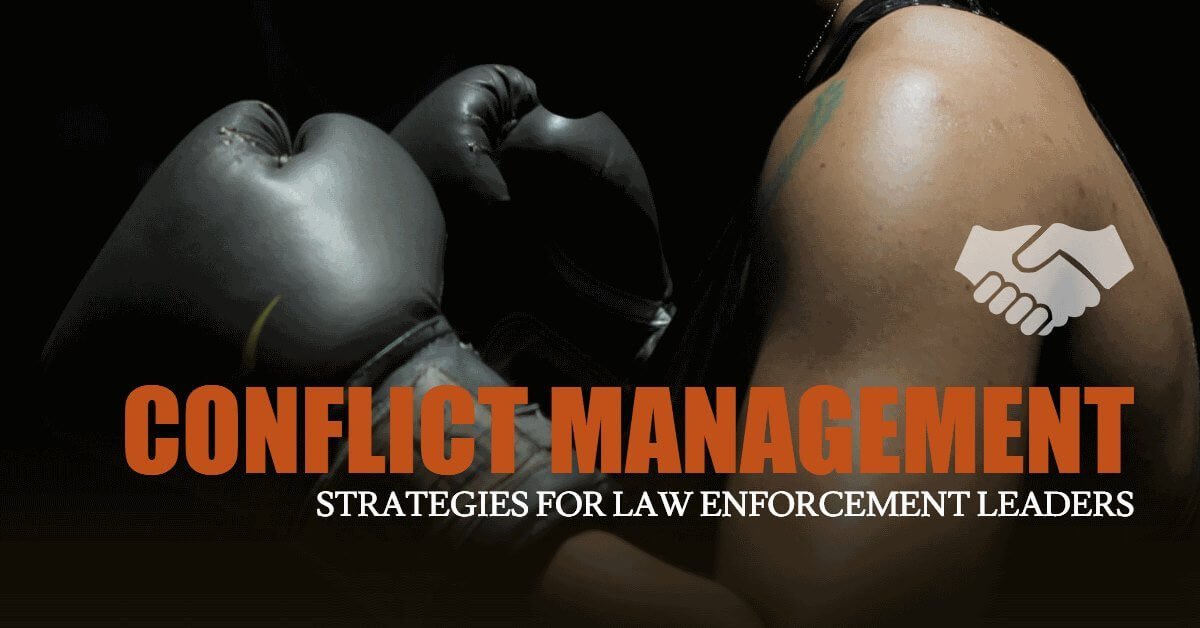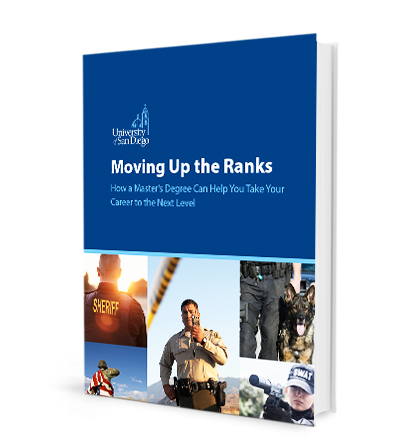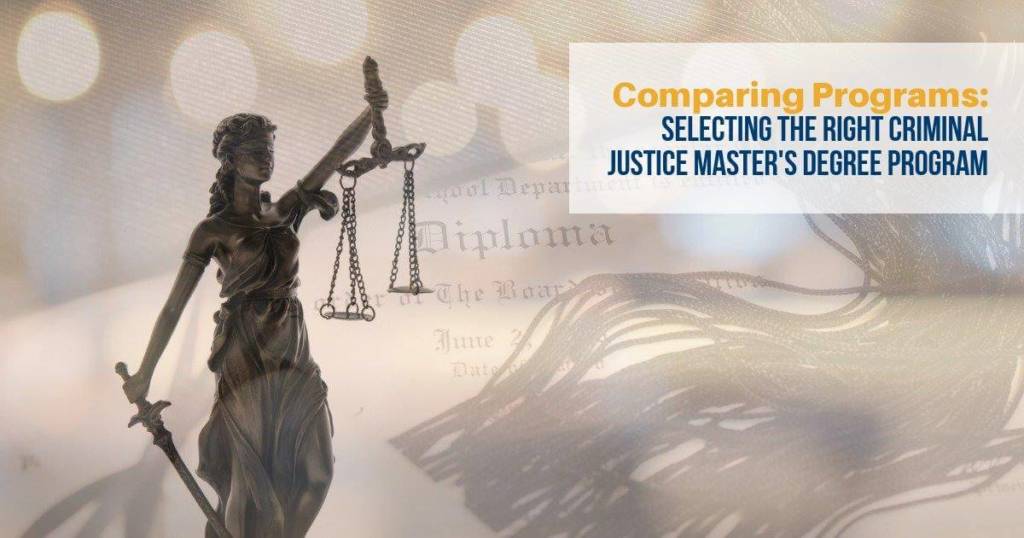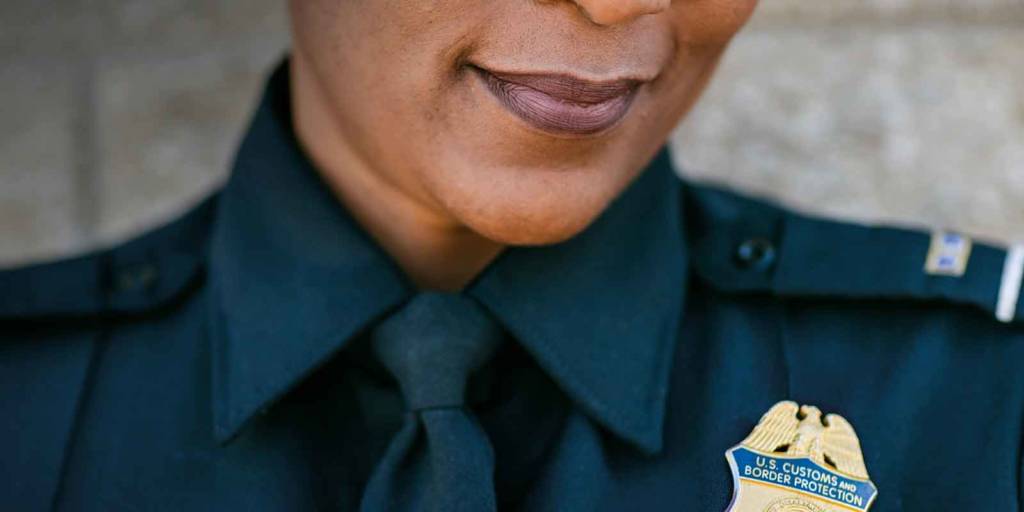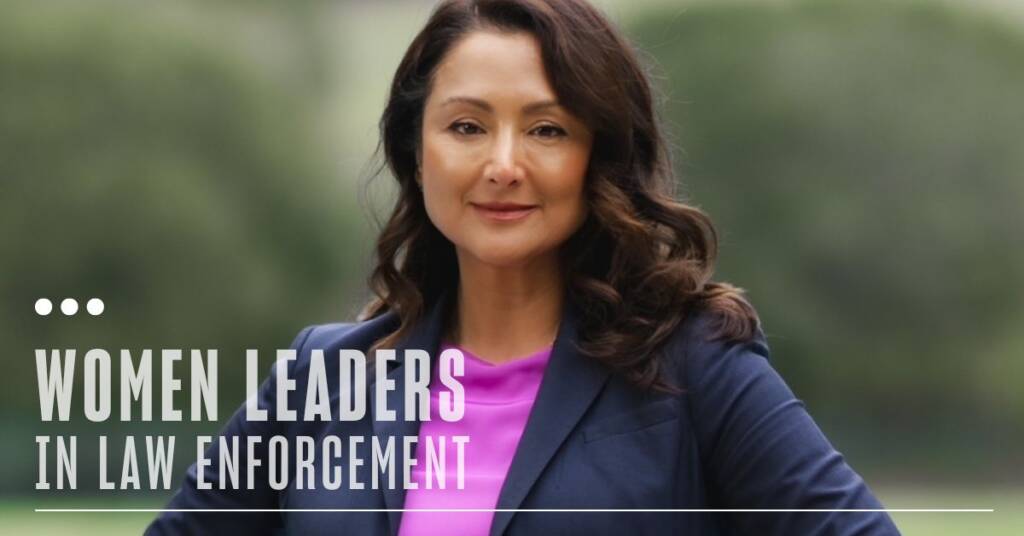Given the challenging and often highly charged nature of law enforcement, the need for police executives to manage conflict — be it internal or external — is an inevitable part of the job.
However, specialized training in police conflict management and other core skills sets essential to law enforcement leadership are not necessarily prioritized. And while natural instincts and on-the-job experience are invaluable, a deeper understanding of the principles of conflict management and resolution will be extremely helpful if you work in a command position.
A simple Google search will turn up plenty of helpful advice targeted to law enforcement officers working on the front lines, but far less information is geared specifically to those in leadership roles.
But whether you’re defusing internal conflicts among officers or those involving members of the community, conflict management is an essential part of the job for nearly all law enforcement executives.
Read on for specific conflict management strategies you can use in your agency or department, including:
- Conflict dynamics
- Understanding conflict sources
- Identifying useful conflict
- Active listening
- Behavior and scenario assessment
- Creative problem solving
- Negotiation
[RELATED] Police Communication Skills Matter More Than Ever: Here’s Why >>
Conflict and Workplace Culture
Many workplaces are terrible at conflict management, and law enforcement agencies are no exception. Some suffer from an atmosphere that regards conflict resolution efforts as pointless or “touchy-feely.” Others go about their business in conflict-averse cultures that reward avoidance and accommodation. Some even put up with aggressive, passive-aggressive or self-serving behaviors, hyper-competitiveness, bullying, retribution for speaking the truth, etc. Time is wasted as petty disputes get in the way of the job.
However, with a focused approach to conflict management, law enforcement leaders can transform negative energy into positive opportunities for learning, growth and, ultimately, more effective operations.
Are you ready to head into “the eye of the storm”? You’ll need to be, because effective conflict management requires confrontation, which often means breaking patterns of avoidance.
According to conflict resolution experts Kenneth Cloke and Joan Goldsmith, authors of “Resolving Conflicts at Work: Ten Strategies for Everyone on the Job,” the goal is to establish a workplace culture that:
- Values open, creative dialogue regarding problems
- Facilitates genuine collaboration between opponents
- Supports preventive, persistent, systemic approaches to resolution and learning
- Is built on a foundation of honest, empathetic, self-critical leadership in addressing and responding to conflicts
So, what exactly does it mean to head into the storm?
According to Cloke and Goldsmith, moving toward adversaries (or bringing two adversaries together) can help uncover the true source of conflict, search for common ground and begin to build an understanding of an opposing viewpoint. The process of heading into the storm creates an environment where people in conflict can “acknowledge what we have in common, clarify and resolve the issues that are dividing us, devise creative solutions, collaboratively negotiate differences, identify and resolve the underlying reasons for the dispute, learn from each other and the conflict, and strengthen and revitalize our relationships.”
Understanding Conflict Sources
In an article titled “3 Rules for Managing Conflict on Your Command Staff,” PoliceOne.com offers several practical police conflict management strategies that are especially useful in situations involving different units or teams. Though the goal is always to work together, when conflict does arise there can be “an instinctive tendency to bunker down and reinforce the lines between competing groups.”
The first challenge is often to determine what is causing the conflict. The majority of conflicts in police agencies and elsewhere spring from one of the following issues:
- Competition over resources
- Conflicting goals and deadlines
- Lack of direction
In each of these scenarios, gaining a clear understanding of the source of the conflict is essential.
Sometimes leadership can inadvertently introduce conflict between groups by assigning conflicting goals or deadlines, or failing to give complete directions. When this occurs, you are well advised to step back, realize where things went awry and make corrections. By clearly identifying priorities, establishing lines of authority and assigning responsibilities, you are better able to guide the parties involved toward cooperative resolution.
Conflict Dynamics
Social scientists have determined that most people respond to conflict in one of these five ways:
- Avoidance
- Accommodation
- Aggression
- Compromise
- Collaboration
Though each of these responses can be useful or even necessary depending on the situation, the most effective approaches often tend to involve compromise and/or collaboration.
To help bring about a resolution to a conflict you may not be involved in first-hand, it is helpful to observe the reactions of the participants, learn what you can from signs of aggression or avoidance and guide them toward the common ground of compromise and collaboration.
Asking thoughtful questions can inspire the conflicted parties to open themselves to other perspectives. For example:
Why do you think they acted as they did?
How do you think they see your actions?
What are your interests?
What are your opponents’ interests?
What interests do you share?
How might both sets of interests be satisfied?
What can you say to the other person that comes straight from your heart and at the same time is clear and nonjudgmental?
What are some things you might do together to increase your cooperation and partnership?
What are the deeper underlying issues in your dispute?
What would it take to resolve them?
This kind of communication is key for leaders as well as their teams, according to Cloke and Goldsmith. “To become genuinely collaborative and transform your conflicts into opportunities for learning and improvement, empathetic and responsive listening is a critical skill.”
Destructive vs. Useful Conflict
The ability to understand that not all conflict is necessarily negative is also essential when using your conflict management skills to strengthen your department. According to PoliceOne.com, so-called functional conflict can bring about positive change to an organization, building stronger teams and relationships because it often serves as a catalyst for co-workers to get creative — developing “new ways of doing things, new approaches to issues and better ways to communicate.”
“Dysfunctional conflict,” on the other hand, “can destroy the cohesion of an agency.” This type of conflict is more of a potential land mine since it often involves destructive “win at all costs” attitudes and can generate negative energy that stands in the way of getting the job done. In such situations, the same type of cooperative approach is not always possible.
“These are the two faces of conflict,” according to Cloke and Goldsmith, “the destructive and the creative, the stagnant and the active, the aggressive and the transformative. Between them lies a set of strategies, techniques, and approaches for turning one into the other.”
The authors suggest that positive outcomes can also result from chronic or dysfunctional-type conflict; the participants just need to dig deeper to “become more aware of what we are contributing to our conflicts and start to listen and learn from our opponents.”
Active Listening
Active listening — also called empathetic and responsive listening — is considered essential by the authors of “Resolving Conflicts at Work.” It starts with clearing your mind and offering your undivided attention, but is much more than that.
“Most people think of listening as a passive activity in which they sit quietly and take in whatever is said. But the best listening is a highly active, responsive, and interactive experience on the part of the listener that requires energy, openness, awareness, and a readiness to bring initiative and curiosity to the conversation,” according to Cloke and Goldsmith. “It means bringing all your senses, including your posture, body language, eye contact, emotions, intentions, heart, and mind to focus on the communication. It means working interactively and collaboratively to clarify your questions and anything you did not completely understand.”
Truly listening, in a way that makes other people feel they have been heard and understood, is “the first step in transforming our opponents into collaborative problem solvers. Empathetic and responsive listening automatically arises when we genuinely care about what our opponent is trying to tell us, and actively reach out with questions, tone of voice and body language.” This is especially true in negotiating conflict within a law enforcement agency, because those involved are highly trained to pick up non-verbal cues such as body language and facial expressions that — if interpreted negatively — can derail progress.
Whether you are directly involved in conflict with a team member, or helping to negotiate a dispute between others, the style of communication you choose to employ — both listening and speaking — is critically important
Emphasizing that effective conflict management also involves strategies for straightforward, sincere and non-judgmental speaking, Cloke and Goldsmith offer a valuable series of “Steps for Effective Communication” that leaders can use to participate in, as well as to mediate productive conversations. Considered helpful in situations ranging from calm to hostile, these include:
- Let go of your own ideas, role and agenda and try to understand what the other person is saying.
- Before you speak, draw out the other person’s ideas.
- Respond respectfully and nondefensively, acknowledging and addressing the other person’s concerns first.
- Anticipate objections and address them before they are raised.
- Identify and emphasize your areas of agreement.
- Acknowledge differences and restate issues positively.
- Ask for feedback to demonstrate and reinforce your positive intentions.
- Compliment the other person for listening.
Behavior and Scenario Assessment
Some people are just difficult to deal with, right? While this may be true, it is a bad starting point when the goal is to resolve conflict.
Though it is important to identify all of the dynamics that play into a conflict scenario, including personalities and past experiences, Cloke and Goldsmith urge considerable caution around how you define the problem.
Specifically, they assert that attributing the source of the problem to “a difficult person” or “a difficult personality” is counterproductive because it creates a justification for others affected by the issue to play the role of victim.
It is more effective, they contend, to view it instead as a “difficult behavior” or “relationship.” Such a shift can cause the person on the hot seat to feel more respected, empowered and responsible, both for the conflict and its resolution.
Also, here’s a surprisingly underutilized strategy. Since coworkers sometimes engage in challenging behaviors at work that are motivated by reasons we don’t understand, such as personal problems at home, lack of respect from a manager, poor self-esteem, etc. — why not simply ask the person why they are behaving this way? Sometimes this can be enough to restart the conversation from a new perspective.
The authors offer many additional tips for responding to difficult behaviors:
- Accept other people and their ideas and feelings about the issues that divide you as legitimate from their perspective.
- Don’t question their character, personality, interests, or feelings.
- Calm yourself and locate your center. If they yell at you, lower your voice rather than raising it and speak to them with a patient, yet confident tone.
- Express your curiosity about the reasons for their behavior and the sources of conflict between you. Do not assume you already know the answers.
- Be willing to observe and release hostile feelings and judgments. Openly acknowledge your own lack of skill in responding to behaviors you do not like.
- Keep an open mind and an open heart. Give the other person the benefit of the doubt, without conceding that what they are doing is right.
- Be unconditionally respectful, courteous, acknowledging and hospitable, regardless of their allegations and behaviors.
- Reach for completion and closure. Make your agreements, understandings, decisions and responsibilities concrete.
[RELATED] The Case for More Effective Law Enforcement Leadership Training >>
Creative Problem Solving
Start by approaching problem solving with a positive attitude. Regarding your conflicts as opportunities, adventures and challenges will help you avoid taking them too personally or seriously, and be far more successful in solving them.
However, the type of positivity that Cloke and Goldsmith recommend involves a very deliberate and multifaceted mindset that includes qualities like:
- Excitement about the existence and complexity of the problem
- Appreciation and enjoyment of paradox and contradiction
- Empathy or compassion for the person you see as the source of the problem
- Openness to all possible solutions
- Optimism about the chances for success
- Balance and flexibility in approaching the problem
- Curiosity about what caused the problem and your opponent as a person
- Humility regarding your own role in creating or sustaining it
- Courage and audacity in addressing difficult or dangerous issues Relaxation in the presence of impasse
- Subtle awareness regarding the problem that allows subconscious ideas to arise
- Playfulness and intuition to encourage creative thinking
- Surrender to other people’s interests, and to the possibility of resolution
The first stage in resolving conflicts consists of opening them up, encouraging them to unfold, and seeing what lies hidden within. But in the problem-solving phase, “the process shifts from expansion to contraction, from emotion to logic, and from large-scale exploration to practical implementation. It is the place where analysis yields to implementation, where leadership is required, and where the deeper meaning of our conflict turns to extremely practical questions, such as who is going to do what by when.”
Negotiation
In “Resolving Conflicts at Work,” the authors distinguish between an aggressive style of negotiation and collaborative negotiation, explaining why they believe collaboration is the far more effective approach.
“In collaborative negotiations, everyone openly and honestly discusses the issues that divide them, analyzes their disagreements in the context of their larger agreements, goals, vision, and shared values, and searches together for solutions that satisfy both sides’ interests.”
The following are some of the key qualities of a collaborative negotiator:
- They move toward their opponents (rather than against them) in a mutual effort to satisfy interests and achieve win-win outcomes.
- They listen respectfully, establish common ground rules, emphasize shared values, discuss issues openly and honestly, and take responsibility for having created problems, as well as for implementing solutions.
- They unconditionally act in a trustworthy, fair, objective, and reasonable way.
- They refuse to manipulate the process and consistently and consistently work for what both sides want or need.
The PoliceOne article on conflict management asserts that it is also important for law enforcement leaders who are attempting to resolve a dispute to “know when to reframe and refocus.” For example, when efforts at resolution are simply not working, it sometimes becomes necessary for the leader to hit the “reset button.” This can involve:
- Changing the dynamics of the groups or the lines of communication
- Designating subgroups to address smaller issues
- Requiring regular face-to-face meetings between key players
The challenge for the leader is to “establish a new sense of shared success, build a winning streak of cooperation and remind everyone of their combined responsibilities.”
Of course, the ultimate goal for leadership is to build effective conflict management protocols into the workplace. According to Cloke and Goldsmith, this starts with recognizing that in successful organizational cultures, “conflict and collaboration are inextricably linked.”
For leaders, this means setting a tone in which “everyone openly and honestly discusses the issues that divide them, analyzes their disagreements in the context of their larger agreements, goals, vision, and shared values, and searches together for solutions that satisfy both sides’ interests.” This empowers the participants to feel invested in working toward positive outcomes that leave the organization and its members “stronger, more successful and more united.”

